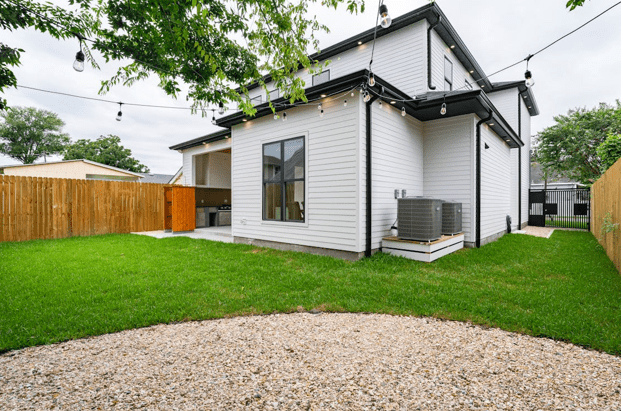Your heating and cooling system works hard every season. Dust, heat, and vibration slowly wear down parts, which leads to higher energy use and shorter life. Routine maintenance cuts that wear, keep efficiency high, and reduce surprise breakdowns.
A federal energy guide explains that regular AC maintenance helps the unit run as efficiently as possible and last longer. Small checks and cleanings prevent big problems later, like frozen coils or overheated compressors. Over the years, that steady care adds up to extra service life and lower total cost of ownership.
Filters are small parts with a big impact
Air filters protect your blower, coils, and motor from dust. When they clog, airflow drops, and the system strains to move air. That stress shortens component life and can trigger safety shutoffs.
Change filters every 1 to 3 months based on use, pets, and indoor air quality. Mark the date on the frame so you remember. A clean filter is the cheapest insurance you can buy for your HVAC.
Professional tune-ups keep components in balance
Technicians spot issues before they snowball. They check refrigerant charge, test safety controls, lubricate moving parts, and calibrate sensors. Tiny corrections here prevent major repairs later. If you are not sure what your system needs, schedule a seasonal checkup with an experienced HVAC company that services your brand. They can measure airflow, clean burners or coils, and verify that your thermostat and dampers are working together.
A national Energy Saver resource notes that combining proper maintenance with other good practices can cut home heating and cooling energy use by 20% to 50%. Less strain from better efficiency means motors, bearings, and compressors last longer. In short, tune-ups protect both performance and lifespan.
Clean coils and airflow protect compressors
Dusty indoor coils block heat transfer. The system then runs longer to hit the setpoint, which overheats the compressor and wears out fan motors. Outdoor units face leaves, grass clippings, and cottonwood fluff that choke airflow.
Keep at least 2 feet of clearance around the outdoor unit and rinse the coil fins gently each spring. Indoors, ask a pro to clean the evaporator coil during your annual service. Better heat exchange equals shorter run times and less mechanical stress.
Smart thermostat habits reduce wear
Rapid temperature swings make systems cycle more often. Short, frequent cycles are hard on igniters, contactors, and blower assemblies. Steady setpoints prevent that stop-and-go punishment.
Energy guidance also stresses that efficient settings and sealing improvements multiply the benefits of maintenance. Use a programmable or smart thermostat to hold moderate temps when you are home and set back when you sleep or are away. Fewer cycles and smoother runtime add years to equipment life.
Ductwork and sealing support system longevity
Leaky or poorly sized ducts force the system to work harder than it should. That means higher static pressure, noisy vents, and premature motor wear. A simple duct inspection can restore balance and reduce strain.
- Look for loose connections or tape that has dried out
- Seal joints with mastic and replace crushed flex runs
- Add insulation in unconditioned spaces to stop losses
- Balance dampers so rooms heat and cool evenly
These steps lower resistance so fans and heat exchangers operate in their sweet spot. The payoff is quieter operation and longer component life.
Maintenance frequency really moves the needle
How often you service the system matters. Skipping years lets small inefficiencies stack up into big heat and pressure problems. Consistent care keeps everything within design targets.
One industry life expectancy report estimates that regular maintenance can increase HVAC lifespan by 20% to 50%, while neglect can cut it by 30% to 50%. Even taking the low end of those ranges, the difference is huge over a 10 to 15-year window. A modest service plan can easily pay for itself by delaying replacement.
A simple maintenance calendar to follow
Set two anchor points each year. In spring, prep cooling with a professional tune-up, coil cleaning, and thermostat check. In the fall, service the furnace, inspect burners and the heat exchanger, and test safety controls.
Between visits, change filters, clear debris from the outdoor unit, and keep supply and return vents unblocked. Note unusual sounds, smells, or changes in runtime and call for service early. Small fixes today prevent big bills tomorrow.
Signs your system needs attention
If your energy bills climb with no change in weather or habits, wear and dirt may be to blame. Rooms that heat or cool unevenly can signal airflow or duct issues. Short cycling or extra-long cycles are also red flags.
Listen for rattles, squeals, or clicks, and watch for ice on refrigerant lines or soot around a burner. Addressing these clues quickly protects expensive parts and stretches the life of the whole system.
Your HVAC does its best work when it is clean, tuned, and running within design limits. A bit of routine care each season saves energy, avoids stress on key parts, and helps your system serve you well for years.
Read More From Techbullion






























